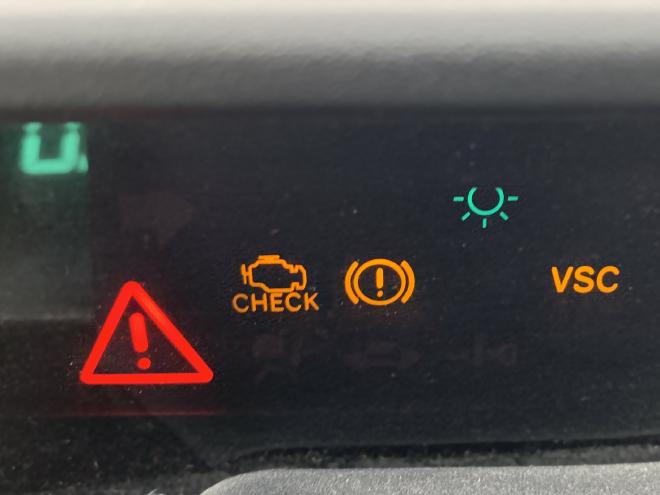Life comes at you fast

On December 21st we were all set to head to Minnesota to spend the holidays with family. We got into the car for the trip to the airport, pushed the button to start, and the display turned on all the Christmas lights.
This was not good timing, to say the least. Following normal computerized car debugging procedures, I tried turning it off and on again. No improvement. Fortunately the car would still drive, after a fashion — the gasoline engine seemed to be working, but the electric system was very confused. The main battery level jumped up and down apparently at random, and rarely engaged the electric motors. Lacking time to do anything else, we drove to the airport and set out on our trip to the frozen north, hoping the car would also be drivable when we got back.
It was, thank goodness. Once we knew we weren’t going to need towing, we arranged to take it in to our local dealership this morning.
The news was not encouraging. The pattern of lights generally indicated a failure of the brake initiators, which was about a $4,000 repair. However, the brake and VSC lights were no longer illuminating, so I went to sit in the customer lounge while they scanned the OBD readouts.
The service rep came back with the news. The main battery pack had failed, and there were a couple of other faults which might need fixing. Also about $4,000 of repairs. I didn’t need to be persuaded that this didn’t make sense on a 15-year-old car with over 130,000 miles on it. (Some people have done 250,000+ miles in a Prius, but generally not in one that’s 15 years old.) Rule of thumb #1: When the repairs cost more than the car is worth, stop repairing. Trying to keep driving the car wasn’t viable either, with a possible failure of the braking system involved.
Rule of thumb #2: Don’t buy a new car unless you expect to drive it until it fails. I really hadn’t been planning on buying a car today. For months now it has felt like we’ve been circling some sort of financial black hole event horizon, with stuff breaking and needing replacement. Plumbers, handymen, the adventure with the dead possum in the crawlspace, plus repairs on the aging car. My plan had been to wait until rothko had finished her postgraduate studies before taking on any other major expenditures, and ideally to pick up a 2019 or 2020 car used, in 2021 or 2022. But now we had no car.
I had also hoped to wait a while and go full electric for the next car. Well, that hasn’t happened. The number one thing I want from a car is reliability, and right now there’s only one full electric car under $50,000 with top-rated reliability, at least according to Consumer Reports. Plus, they’re still a good $10,000 more than even a plug-in hybrid, because of the price of the huge battery packs.
The Prius had been a great car throughout its life. So now we have another Prius. It was slightly more expensive than the model I’d have picked given an unconstrained choice, but it was literally the only one they had in stock, we got an OK deal on it, and since I expect to be driving it for the next 15 years it didn’t seem worth trying to shave 10% off the price by waiting for a cheaper model to be available (and renting or leasing something else in the meantime). That said, I hate and fear spending large amounts of money, and I hate and fear debt, so all in all it has been a terrifying day.
Car technology has obviously improved a lot in 15 years. The new car has every feature I’ve wanted and then some. The old car had us routing audio via a cassette adaptor (ask your parents, kids); the new one has Apple CarPlay. The old car had no back-up camera at all; they’re now mandatory in the US, but the new car has a camera, plus sensors to detect pedestrians and cross-traffic. The old car had cruise control; the new one can keep a set distance from the vehicle in front. And so on, and so on.